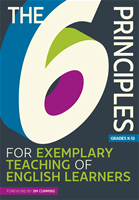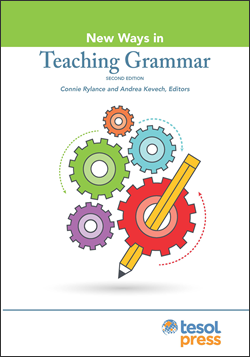A Fortune-Telling Activity for the Simple Future Tense
by Anna Karin Ro
 Mastering the difference in use between will and be going to for discussing future predictions can be confusing for students. Celce-Murcia and Larsen-Freeman (1999) state the difference between these two forms relates to their meanings, with will referring to spontaneous decisions and be going to for premeditated decisions. One solution to clarify this is through a 40-minute interactive lesson in which students create “fortune tellers” (sometimes called “cootie catchers”) to make four predictions using will (e.g., You will meet a woman) and four predictions using be going to (e.g., You are going are going to meet a woman).
Mastering the difference in use between will and be going to for discussing future predictions can be confusing for students. Celce-Murcia and Larsen-Freeman (1999) state the difference between these two forms relates to their meanings, with will referring to spontaneous decisions and be going to for premeditated decisions. One solution to clarify this is through a 40-minute interactive lesson in which students create “fortune tellers” (sometimes called “cootie catchers”) to make four predictions using will (e.g., You will meet a woman) and four predictions using be going to (e.g., You are going are going to meet a woman).
Materials
- Square pieces of paper for each student
- Instructions for making the fortune teller
- List of sample prediction sentences (Appendix [.docx])
Procedure
1. Students Make a Fortune Teller (5–10 minutes)
Lead the students in the process of making a fortune teller:
- Take a square piece of paper. Fold the paper diagonally in half both ways, and reopen to original size.
- Fold corners into the center.
- Turn the folded paper (now a smaller square) over, and again fold the corners into the center.
- Fold the paper in half, lengthwise, in both directions.
- Insert you fingers under the four out tabs and push them up toward the middle, creating a point with your fingers and causing the flaps to stand out on their own.
- Label the fortune teller:
- Section 1. Label the four outer tabs 1–4.
- Section 2. Label the inside tabs 1–8.
- Section 3. The innermost tabs should have eight different predictions written under them.
(You can also go to Wikipedia for instructions with images.) Guiding the students through the steps to make the fortune tellers with a sample finished product to show in class works best. Students need crisp folds to make it easier to use the fortune teller in the final activity. (Some students may already be familiar with fortune tellers and may be able to help other students with folding.)
Once the folding is completed, guide the students in numbering their fortune tellers. They should number the four outer flaps (1–4) and the eight inner triangles (1–8). Refer to the diagrams in the Appendix (6a for the outer flaps and 6b for the inner triangles).
 2. Students Write Predictions (5–10 minutes)
2. Students Write Predictions (5–10 minutes)
Post example sentences (Appendix [.docx]) on a document viewer, computer, or overhead projector. Once the fortune tellers are formed, have students write predictions in their fortune tellers under the eight triangle tabs. Students need time to compose their predictions. They should be only be allowed to use a maximum of four example sentences, thus generating at least four sentences on their own. Monitor the room to ensure that students are writing the predictions in the correct part of the fortune teller.
3. Students Predict the Future (10–15 minutes)
Once everyone has finished composing sentences, demonstrate an interaction with a volunteer.
A: Can you tell me my future?
B: Yes! Pick a number between 1 and 4.
A: Four.
B: [Counts to 4 while holding and moving the fortune teller. At 4, reveals four new numbers between 1 and 8]: Pick a new number.
A: Five.
B: [Counts to 5 while holding and moving the fortune teller, reveals the numbers again]: Choose another number.
A: Three.
B: [Reads the prediction listed under the number three.]
Release the students to circulate the room using the fortune teller to predict the future for their classmates. Showing off their creation and interacting with their classmates solidifies the grammatical structure in a memorable way for students.
4. Recap the Simple Future Tense Forms (10 minutes)
After the interaction, lead the class in a discussion explaining the differences between the use of will and be going to for the formation of simple future statements. The lesson can include examples from the course textbook or explanations on the differences in meaning and usage between the two verb forms. It is useful to have students identify aspects of the tense from their interactions with their peers.
References
Celce-Murcia, M., & Larsen-Freeman, D. (1999). The grammar book: An ESL/EFL teacher’s course (2nd ed.). Independence, KY: Heinle & Heinle.
Anna Karin Roo is a PhD candidate at Washington State University. She earned an MA TESOL degree in 2008 from the University of Washington and has taught English in China, Hong Kong, and the Seattle, Washington, USA area. She has an interest in teaching grammar in memorable ways for students.
TESOL Blogs
Interested in writing a blog for TESOL?
Read the submission guidelines and send us your post!
Check out a few recent TESOL Blog posts:
|
English Language Learners in University Classrooms: Practical Resources for Faculty, by Elena Shvidko
 As language specialists, we may be asked by colleagues from other departments how to better help international students (for the purpose of this blog, I will equate this term with English language learners) in college classrooms. Lots of resources are available out there—both print and online—that aim to raise university professors’ awareness of how to help these students succeed academically. In this blog post, I’ll list a few resources that may be helpful to university instructors who are not trained to work with English language learners. While I included several books and academic journals for those who’d like to dig deeper, most of the resources below describe practical suggestions and recommendations for university faculty. Read more. As language specialists, we may be asked by colleagues from other departments how to better help international students (for the purpose of this blog, I will equate this term with English language learners) in college classrooms. Lots of resources are available out there—both print and online—that aim to raise university professors’ awareness of how to help these students succeed academically. In this blog post, I’ll list a few resources that may be helpful to university instructors who are not trained to work with English language learners. While I included several books and academic journals for those who’d like to dig deeper, most of the resources below describe practical suggestions and recommendations for university faculty. Read more.
|
|
ESP Project Leader Profile: Michael Ennis, by Kevin Knight
 In this ESP project leader profile, we meet Michael Ennis, a leader in Italy who shares his story of launching a TESOL group that has held several ESP conferences. Please see Mike’s bio: In this ESP project leader profile, we meet Michael Ennis, a leader in Italy who shares his story of launching a TESOL group that has held several ESP conferences. Please see Mike’s bio:
Michael Ennis is the English Language Coordinator at the Free University of Bozen-Bolzano’s Language Centre and the founding coordinator of the TESOL Italy Val d’Adige Local Group. He has taught English and German at multiple universities in the United States, Germany, and Italy, and has given numerous conference presentations, organized teacher training, and published on his interests in ESP, ESAP, CLIL, extra credit and motivation, intercultural language teaching, and cultural studies. He is an active member of TESOL Italy and TESOL International, also serving on the TESOL Italy National Committee and the Editorial Review Board for TESOL Journal. He recently contributed an entry on “bilingual programs” to the TESOL Encyclopedia of English Language Teaching.
In his interview responses, Mike reflects on project leadership and provides valuable information for ESP practitioners aiming to start up an ESP group. Read more. |
TESOL Bookstore

Featured Resources from TESOL Press
 The 6 Principles for Exemplary Teaching of English Learners
The 6 Principles for Exemplary Teaching of English Learners
With a Foreword by Jim Cummins
TESOL International Association Writing Team
As the number of English learners around the world soars, so does the need for quality English language instruction. TESOL International Association has furthered its ELT leadership role by defining a core set of principles for the exemplary teaching of English learners. The 6 Principles will help you make informed decisions to improve English language instruction and assessment. These foundational principles are for all educators and are applicable across different educational settings. This book features a detailed explanation of The 6 Principles, practical applications for your classroom, ideas for building a strong community of practice, and more!
 New Ways in Teaching Grammar, Second Edition
New Ways in Teaching Grammar, Second Edition
Connie Rylance and Andrea Kevech
Unsure of how to include creativity and project-based learning in grammar lessons? The 2nd edition of this best-selling book includes updated activities and new contributions that cover a wide range of teaching techniques -- from introducing a specific grammar point to providing meaningful, contextualized practice.
 More Than A Native Speaker: An Introduction to Teaching English Abroad, Third Edition
More Than A Native Speaker: An Introduction to Teaching English Abroad, Third Edition
Don Snow and Maxi-Ann Campbell
In this newly updated third edition, learn step-by-step how to effectively teach English abroad. Gain valuable tips and resources for teaching in an unfamiliar educational system, working with students of varying ages and skill levels, and adapting to life in a different culture. A rich array of online resources and activities included.